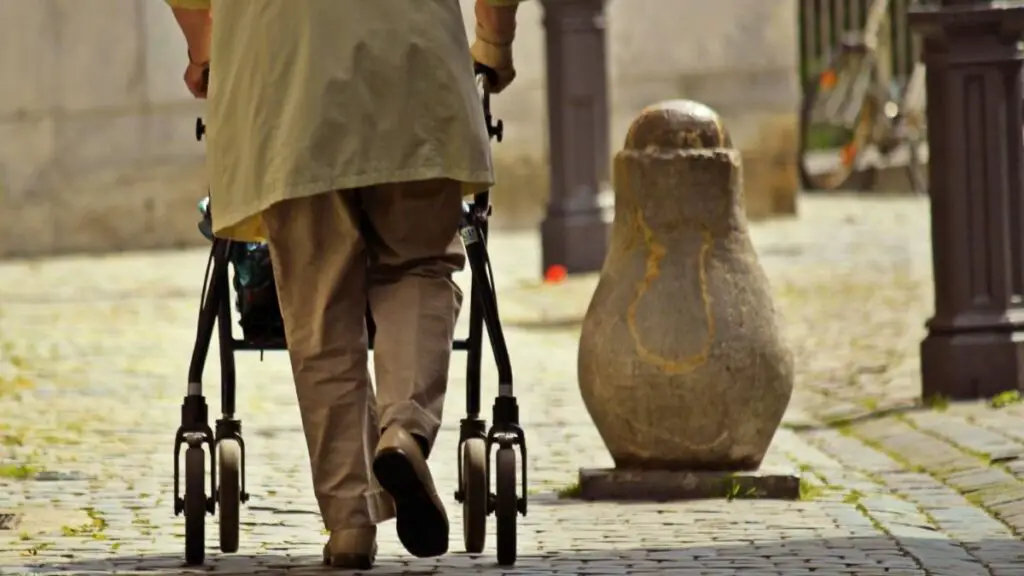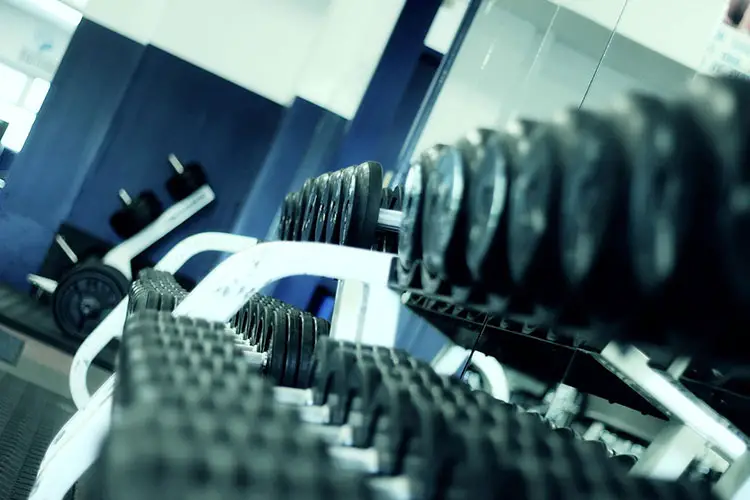Key Points:
- Sarcopenia is age-related muscle loss.
- Sarcopenia is progressive, and without treatment it will get worse.
- Sarcopenic obesity is when someone loses muscles while simultaneously gaining fat.
- The primary cause of sarcopenia is advanced age.
- Symptoms of sarcopenia include weakness, lack of endurance, and low energy.
- Sarcopenia can be prevented with strength training, living an active lifestyle, eating enough, eating protein, and getting enough Vitamin D.
Testing positive for anything other than a pregnancy is depressing when one goes to the doctor, and if recently diagnosed with sarcopenia, it can sound a rather daunting label.
But what exactly is sarcopenia? Are there ways that we can treat it? Is it reversible?
What is Sarcopenia?
Sarcopenia is age-related muscle loss. It is a prevalent problem throughout society. Those suffering from sarcopenia will display decreased levels of strength, muscle function, and a decreased quality of life.
Sarcopenia is progressive, and without effective treatment it will only get worse. It is not something that one has the luxury of being able to ignore. Sarcopenia should be dealt with immediately following diagnosis.
Those who test positive exhibit an increased risk of death, hospitalization, disability, fractures, falls, need for long-term care, and higher health care costs.
Women in particular need to take guard against sarcopenia. Studies have shown that women with sarcopenia are more apt to have osteoporosis as well. This in turn can lead to fracture risk, the need for joint replacements, extended periods of physical therapy, and long-term disability.
That being said, men are not immune to the fracture risk associated with sarcopenia. It’s been found that men with both low bone mineral density (whether that be osteoporosis or osteopenia) combined with sarcopenia have a four-fold increased risk of breaking a bone when compared to men who have normal age-related levels of muscle mass and bone mineral density.
Who Gets Sarcopenia?
Anybody can develop sarcopenia, but there are most certainly risk factors that will make one more likely than others. The primary group of people experiencing sarcopenia is the elderly. Within this age group, sarcopenia is relatively common, with greater than 50% of those over the age of 80 having it.
However, one does not have to be older to develop sarcopenia. Eating disorders and inflammatory diseases can be the causes of sarcopenia in younger patients.
What is Sarcopenic Obesity?
Sometimes with sarcopenia, the individual will lose more and more muscle mass while they simultaneously gain fat tissue. This is referred to as sarcopenic obesity.
The result is a person who may be heavier than they ever have been before, but they have been continuously losing muscle tissue.
People who suffer from such are at an increased risk of disease, injury, and are typically very frail. It’s because of all this that those who are sarcopenically obese typically see worse results than those who suffer from sarcopenia but are not obese. The dynamic of losing muscle while gaining weight is problematic.
How is Sarcopenic Obesity Treated?
Sarcopenic obesity is treated in much the same way as traditional sarcopenia, via regular exercise, a healthy diet, and increasing one’s amounts of active daily activity.
What Causes Sarcopenia?
The primary cause of sarcopenia is advanced age. The older one gets, the higher their chances grow of developing sarcopenia. Humans naturally lose muscle mass as they age, with people losing anywhere between 1–2% of their muscle mass each year after they turn 50[AT9] , but with sarcopenia things take a step further. It’s considered to be a very severe loss of muscle mass.
Age is not the only cause of sarcopenia, however. After all, even younger people can end up developing sarcopenia – particularly if they suffer from inflammatory conditions. Depending upon the condition, there is some level of debate as to whether these inflammatory diseases directly cause sarcopenia, or if the pain often associated with them (such as with rheumatoid arthritis) causes the patient to not want to move. Decreases in physical activity follow, and sarcopenia is the result.
Regardless of the causes, this brings us to our next point: decreasing levels of activity.
Typically, as we age, we become less active. Compare the energy levels of a ten-year-old with an 82-year-old, and the difference makes itself very clear. This decrease in activity however comes at a cost: loss of muscle mass.
Muscle is subject to the “use it or lose it” rule.
Hormone disturbances can also be a cause of sarcopenia. Low testosterone, growth hormone, or problems with insulin are all hormonal situations that have been proven to be linked to sarcopenia. While hormone treatment is often not the first plan of attack for sarcopenia, it may be worth discussing with your doctor if your levels are unnaturally low.
How Doctors Diagnose Sarcopenia
The chief symptoms of sarcopenia would be a feeling of weakness, lack of endurance, and a feeling of low energy. Meanwhile, the signs of sarcopenia would be slow walking speed, decreased muscle mass, and an inability or difficulty to perform some activities of daily life due to weakness.
Doctors test for sarcopenia in two primary ways.
The first is via muscle mass charts. Population studies have helped doctors determine average levels of muscle mass by age group. With tools such as BIA devices, a doctor can measure how much muscle and fat mass one has, and then plug that information into the muscle mass chart.
This allows the doctor to determine if you have an age-appropriate level of muscle mass. If the number generated for you is deemed to be too low, the doctor is likely to conduct further tests.
The second is via strength tests. Usually, this comes in the form of a handgrip strength test.
The patient is given a gripping device and told to squeeze it with one hand as hard as possible. A meter within the device measures how much force is applied, and the doctor is then able to use that metric to determine if the patient has exhibited a normal or diminished level of strength.
Hand grip strength is often used as a predictor of total body strength, and so this will allow the doctor to better determine if the patient is sarcopenic or not. If the diagnosis is positive, a referral to physical therapy often follows, where the patient will be put through an exercise training regimen to help to build back strength, muscle mass, and muscle function.
One of the chief tests that the physical therapist is bound to put the patient through is a walking test. Within this test, the patient must walk as far as they can within a set time limit. The further one can walk, the better their score. Those who walk at a rate below 0.8m/s are considered to be sarcopenic.
5 Ways to Prevent Sarcopenia
Thankfully, there are a few things that can be done to prevent sarcopenia:
- Regular Strength Training
- Living an Active Lifestyle
- Eating Enough Calories
- Eating Enough Protein
- Vitamin D Supplements
Let’s take a moment to look at each in turn…
1) Regular Strength Training
The best way one can prevent sarcopenia is through regular strength training. While there are other means by which one can help to prevent age-related muscle loss, strength training is easily the top preventative treatment.
For many though, this proves to be a daunting prospect. If you have never been familiarized with the interior of a gym, the sheer number of machines, weights, and adjustments can leave one paralyzed with options and confused.
Likewise, many recognize that strength training contains some inherent risks, and that if you do not utilize the correct form for a particular exercise, you run the risk of getting hurt. That’s why finding a qualified exercise physiologist or personal trainer is important.
They will have the knowledge and skillset necessary to know what exercises you need to do, which ones may lead to injury, how to engage proper form throughout a lift, and how to properly scale the intensity of your workout.
The result will be building more muscle mass. Given that measuring one’s muscle mass is the primary means of predicting one’s age-related strength, this is a big deal when we’re talking about sarcopenia.
One further benefit of regular strength training is that it helps to improve two metrics that are used to predict one’s risk of having falls – speed with which one can get out of a chair and gait speed. So, not only will your strength training help to halt or reverse your sarcopenia, it will also improve your safety as you go about your activities of daily life.
2) Living an Active Lifestyle
While regular strength training is vital, it is also important to remember that sitting all day sitting in a chair is detrimental. When muscles are not used, they are lost. Strength training does matter but being active is an important component of sarcopenia prevention as well.
Daily activities that can help to keep one active include gardening, daily walks, bike rides, hikes, taking stairs, geocaching, yoga for seniors, and even fly fishing are all great ways to increase one’s daily level of activity as well.
3) Eating Enough Calories
All too often, people don’t eat the necessary number of calories they need for each day. The result is weight loss, with muscle loss comprising a large part of that lost weight. This happens when people begin skipping meals – breakfast being one of the most common meals skipped – drastically decreasing portion sizes or focusing on low-calorie meal replacement shakes.
Your body has a daily caloric need known as your resting metabolic rate (RMR). If you don’t eat enough calories to reach your RMR, you’ll lose weight. If you’re already pre-disposed to developing sarcopenia, this means that you’re only going to lose more and more muscle mass, with the result of frailty. Skip replacement shakes and focus on weight gain shakes instead.
4) Eating Enough Protein
While eating enough calories is important, it is also vital to ensure that a good portion of those calories are protein.
A healthy nutrition balance is vital and eating enough protein calories is another piece of the puzzle in defeating sarcopenia. If the body is not getting enough protein it will be unable to maintain its current muscle stores, let alone build new muscle. Furthermore, not eating enough protein is very common among the elderly.
One study in Japan examined 900 older people, discovering that fully 77% of them were not intaking the recommended level of daily protein. It’s likely that this is a transferrable discovery to other older population groups.
This same Japanese study recommended the ingestion of 1.0-1.2g of protein per kilogram of body weight per day as a safe means of assuring that you were getting enough protein to protect yourself against sarcopenia.
While it’s not common in the United States, there is actually a disease called kwashiorkor that people can get from not consuming enough protein. It’s a vital macronutrient of life, and if you are struggling with sarcopenia, you need to ensure that you’re eating enough of it.
If you’re looking to increase your protein intake meat, cheese, and milk are all excellent sources of protein. Provided they’re not fried, are all what would commonly be considered healthy as well.
5) Vitamin D Supplements
Always talk to your doctor before beginning any form of supplement regimen. It has been found though that vitamin D supplementation seems to possess a powerful protective effect against the development of sarcopenia in post-menopausal women. Test subjects within this study actually saw increases in muscle strength and controlled any further loss in muscle mass as well.
Consider Vitamin D supplements (after talking with your doctor) if this describes you.
- Highest potency: Provides 5, 000 IU of Vitamin D3 per serving, the daily requirement recommended by the Vitamin D Council to restore depleted vitamin D levels in adults with minimal sun exposure.*
- Most active form: NatureWise Vitamin D3 gives you the same natural, biologically active form of Vitamin D that your body produces naturally from sunlight — but without the risky UVB exposure.
Final Thoughts
While sarcopenia is most certainly a situation that needs to be addressed, it is not a hopeless case. There are several things one can do to combat it, and depending upon one’s views of strength training, they are all relatively pleasant. There are things that can be done to fix the issue at hand, leading to a host of benefits for those struggling with sarcopenia.
What are your thoughts on the matter? Have you been diagnosed with sarcopenia? Has your doctor told you anything different – any other tips? Let us know in the comments below!
References
https://www.ncbi.nlm.nih.gov/pmc/articles/PMC4269139/
https://www.ncbi.nlm.nih.gov/pmc/articles/PMC5729083/
https://mayoclinic.pure.elsevier.com/en/publications/sarcopenia
https://www.iowaclinic.com/physical-therapy/how-to-combat-sarcopenia/
https://pubmed.ncbi.nlm.nih.gov/7493218/
https://www.ncbi.nlm.nih.gov/pmc/articles/PMC4625812/
https://link.springer.com/article/10.1007/s00198-015-3151-9








